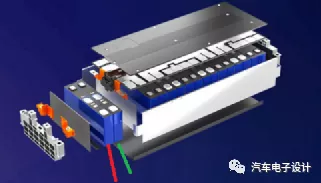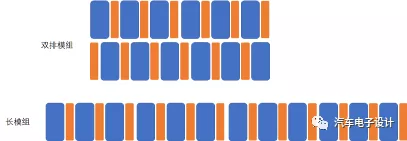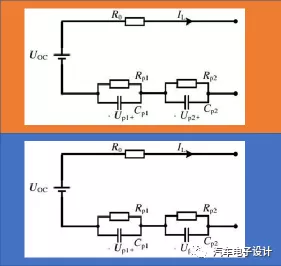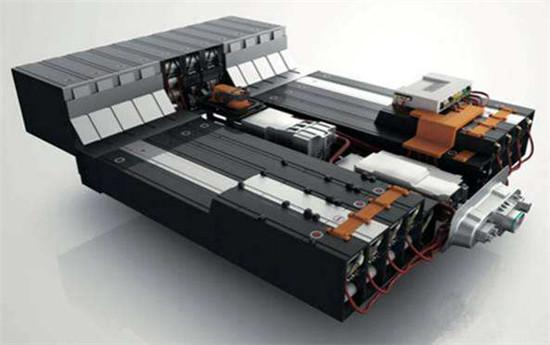Recently, there are two articles that discuss the mixed use of ternary and iron phosphate batteries from two perspectives – “Exclusive Interpretation: NIO’s ‘Iron Phosphate Ternary’ Battery System Patent” and “In-Depth Analysis: What is the New Battery of Ternary Lithium Iron?”. Several interesting topics are mentioned in these articles:
1) Does the combination of ternary and iron phosphate batteries have value, and can they take advantage of the longevity of iron phosphate and the advantages of ternary OCV?
2) If batteries of different types and characteristics from one manufacturer can be combined, can there be uniform battery specifications in the future, and can different battery companies mix and match their batteries?
Combination of Iron Phosphate and Ternary Batteries
This method comes from “A Battery System, A Method for Estimating its SOC, A Computer Device and a Medium”, which was originally proposed by the battery company. This method uses one iron phosphate and one ternary battery cell as a sandwich cookie to achieve mixed grouping in the same battery pack.

The advantages of this combination are as follows:
1) There is no need to consider too much heat transfer barrier problems, because the heat resistance and situation of iron phosphate batteries can block the overall propagation path
2) The energy density of ternary batteries is relatively high, and the cost of iron phosphate is low. This combination can achieve the maximum use of different thicknesses of battery cells with the same capacity in the size direction. Compared with a pure iron phosphate pack, it can increase some energy in a similar space. Compared with a pure ternary pack, it can reuse space as much as possible.
3) As the SOC estimation of pure iron phosphate is difficult, ternary batteries, as a type with steep OCV curves, can improve the estimation accuracy of the BMS
These are the three main benefits we can think of.
Next, let’s take a look at the difficulties:
1) If iron phosphate and ternary batteries with the same battery capacity are used, iron phosphate will be significantly thicker than ternary, causing a arrangement of thick-thin-thick-thin-thick. In direct design, whether it is a double-row module or a long module, the design status shown below will appear. The intuitive concept is that the design of the CCS bus bar row is difficult, there are difficulties in the manufacturing process of the module, and there are difficulties in controlling the overall expansion force. Of course, if you are determined, these can all be done on a process level.
 2)How to control the internal resistance of a battery is a very troublesome issue. That is to say, when considering fast charging and high power output, the internal resistance difference between the same capacity iron-lithium battery and ternary battery in series connection will bring great difficulties. It means that the characteristics SOP of one type of battery under different temperatures and powers have been changed when two types of batteries are connected in series. Of course, this can also be mitigated through matching, but this is equivalent to integrating two different efficiency products on another level. You can imagine that two types of batteries are completely different at -20°C, and putting them together will result in the worse performance.
2)How to control the internal resistance of a battery is a very troublesome issue. That is to say, when considering fast charging and high power output, the internal resistance difference between the same capacity iron-lithium battery and ternary battery in series connection will bring great difficulties. It means that the characteristics SOP of one type of battery under different temperatures and powers have been changed when two types of batteries are connected in series. Of course, this can also be mitigated through matching, but this is equivalent to integrating two different efficiency products on another level. You can imagine that two types of batteries are completely different at -20°C, and putting them together will result in the worse performance.

3)Other difficulties in battery mix and match. All of our previous work was done with one supplier, one factory, and the same batch of similar capacity and parameter batteries. This kind of mix and match actually breaks the efforts of the front-end, and obviously creates a broken window effect. Especially with the difference of fast charging, it is difficult to match.
Of course, there have been many discussions in the green core channel about the estimation problems of battery BMS. I list some of them below:
1) Due to the great difference in OCV-SOC curves between ternary and lithium iron phosphate batteries, different calculation processes need to be used here for separate statistics. Using 108 series as an example, 54 series ternary needs to be calculated separately from 54 series iron-lithium to set voltage protection, which also has some differences for individual sampling chips.
2) Then use a comprehensive SOC window usage segment. An interesting idea here is to map the SOC upper and lower limits of ternary batteries to the SOC interval of the battery system to establish a mapping relationship between the upper and lower limits of SOC of ternary batteries and the SOC interval of the battery system. That is, the 100% point of the phosphate iron lithium battery is taken as the full charge point of the battery pack, and the 0% point of the ternary lithium battery is taken as the empty point of the battery pack. In this way, the available capacity of the battery pack cycles between the 0% point of the ternary lithium battery and the 100% point of the phosphate iron lithium battery.
In the initial use state, the decay rate of iron-lithium and the initial decay rate of ternary will cause significant differences in different temperature areas and different cycle numbers. Due to the large actual capacity differences, it will be more difficult to control the design of the overall SOC based on SOC in subsequent stages. Especially, the actual self-discharge characteristics differences will cause greater differences. I think the considerations in these two directions, the decay in different regions and models and the self-discharge differences caused by manufacturing differences in different batches, are not included in the initial considerations, which may directly lead to the inconsistency between design goals and reality.### Summary
I think that in the future, different suppliers may use mixed battery cells under the same size conditions. In fact, when we repair batteries, it is similar to putting new and old batteries together and processing them uniformly according to the characteristics of the old batteries. This complex control may be more effective when the BMS moves towards the calculation platform direction, accurately characterizing the battery to individual level and with strong adjustability. However, the benefits of mixed use are a bit of a mixed bag, and innovation is good. But the main thing driving innovation to actual implementation is the system-level benefits, i.e. when the benefits are large enough, many things can be easily negotiated. But at present, the benefits and difficulties do not seem to be proportional.

This article is a translation by ChatGPT of a Chinese report from 42HOW. If you have any questions about it, please email bd@42how.com.
